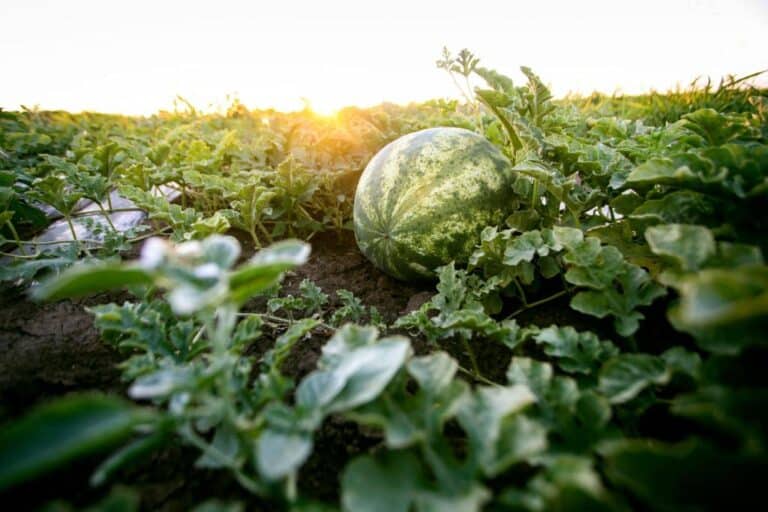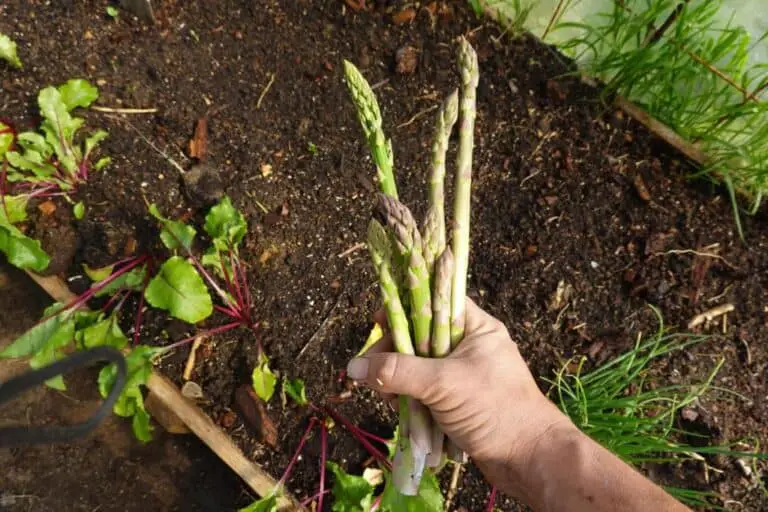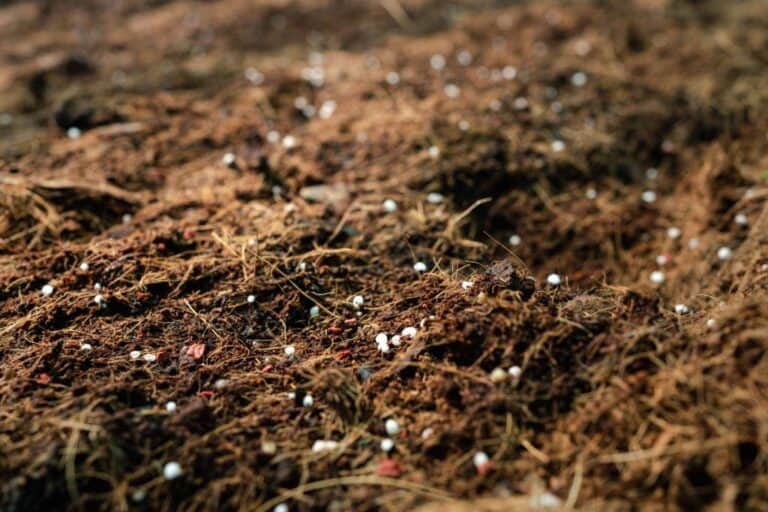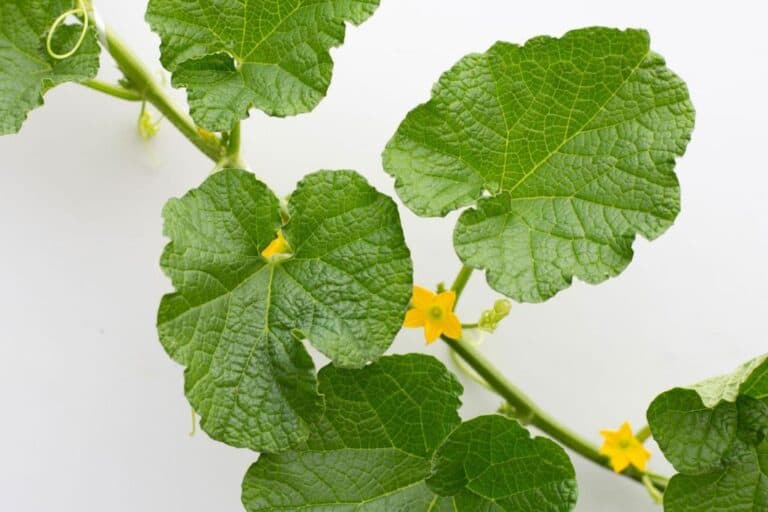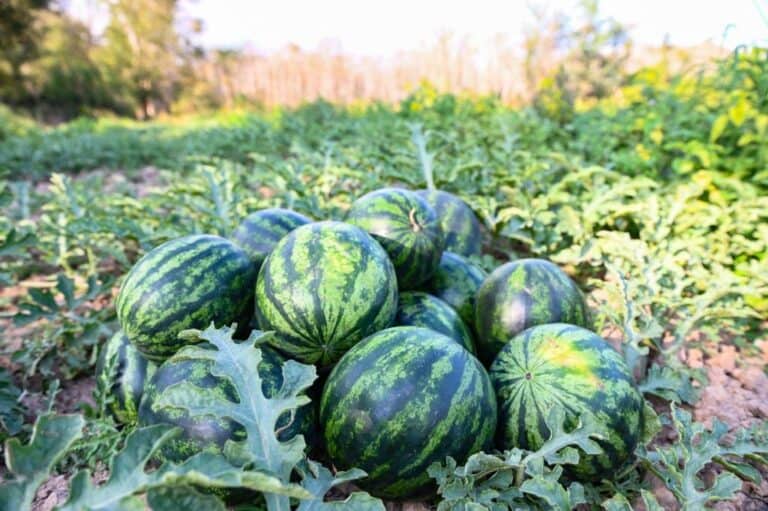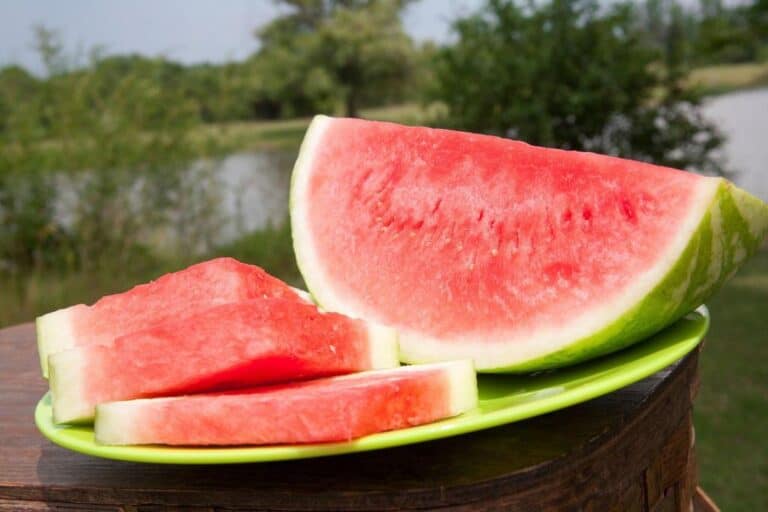Watermelon Webbing: How to Pick a Sweet Watermelon

There’s something undeniably alluring about a ripe, juicy watermelon on a scorching summer day. That first bite, the cool and sweet explosion of flavor, is a quintessential experience. But how do you ensure that your next watermelon will be that perfect, mouthwatering delight? It all starts with understanding “watermelon webbing” – those intriguing patterns on the skin that hold the secret to its sweetness.
In this guide, we’ll dive deep into the world of watermelons, unveiling the mysteries of webbing and sharing practical tips on how to pick the sweetest one at the grocery store or farmer’s market. By the end of this journey, you’ll be equipped with the knowledge and confidence to choose a watermelon that promises a delicious slice of summer.
How to Pick a Sweet Watermelon
- Field Spot – This is the spot where the watermelon lay on the ground. If the spot is white or you can still see the stripes through the spot, it’s a clue that the watermelon didn’t reach full ripeness before being picked. Ideal is a golden color and not being able to see the stripes where the field spot is
- Size and Shape – Bigger is not better when picking watermelons. The biggest watermelons tend to be more watery and less sweet. The biggest watermelons are normally an oblong shape. Pick a smaller and more symmetrically round watermelon for a better chance of it being sweet.
- Density – You want the watermelon to feel heavy for its size.
- The Stem – Pick a watermelon with a dry stem. Not green and pliable. Watermelons left to full ripeness will develop a dry, dead stem.
- Thump It – Give the watermelon a whack. A low-pitched sound is ideal.
- Seeds – The seeds should be dark brown or black and of good size. This indicates that the watermelon was left on the vine long enough for the seeds to mature. If it is a seedless variety, the seeds will be small, white, and immature.
- Webbing – Supposedly webbing on a watermelon means sweeter. More on this below.
What is Watermelon Webbing?
Bee pollination leaves a scar on watermelons known as “webbing.” The more webbing on a watermelon, the more the female flower is pollinated, and the sweeter the watermelon will be.
I found numerous studies done on the bee pollination process, but none of them mentioned the amount of pollination affecting the sweetness of the watermelons.
It would seem to me that if more pollen increased the sweetness of watermelons, frequent hand pollination would be the way to get a sweet watermelon.
This article from the University of California says that hand pollination is less successful than bee pollination. I don’t understand how or if that’s true.
This article is by Seminis, the largest fruit and vegetable seed distributor in the world. It says underpollinated flowers will result in less hormone production by the plant, which will result in underdeveloped, misshapen fruit and less fruit per plant.
This study says something similar: that the amount of pollination affects the shape of the watermelon. This happens because the stigma of the female flower has 3 or 4 lobes, and all of them need to be pollinated or watermelons will grow misshapen. The below quote explains this better.
An uneven melon will happen if there is not enough pollen on one stigma lobe. This is because pollen grains make pollen tubes that move down and not much from side to side. Thus, saturation pollination is an important consideration if uniform melons are to be produced.
This quote is from an article by the University of Florida linked just below the Bees and Watermelons section.
Bees & Watermelons
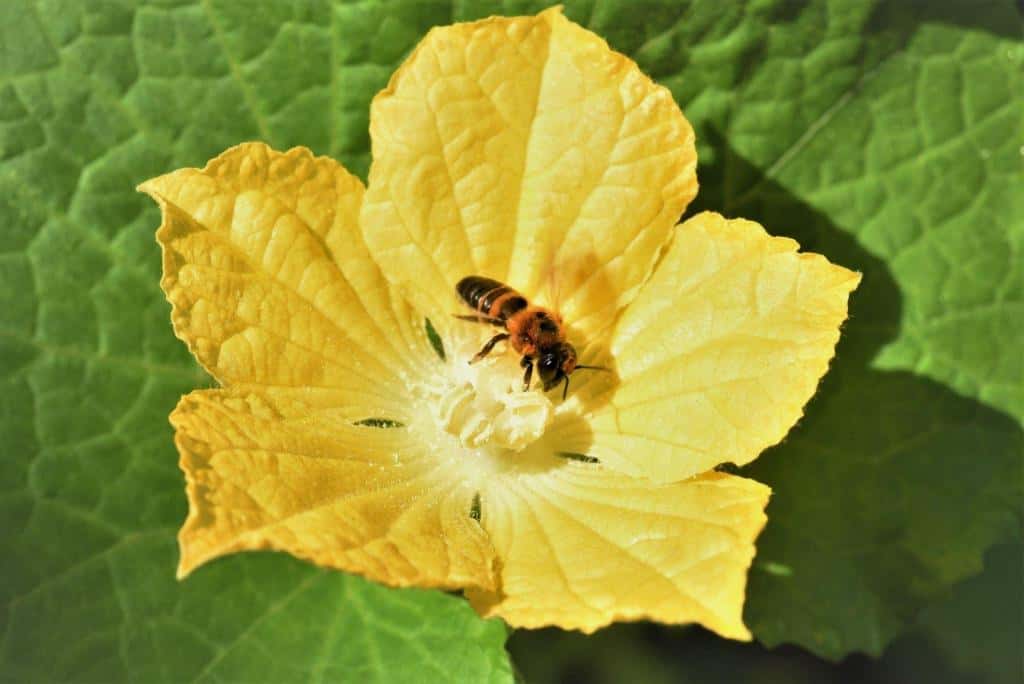
Beekeepers rent out their beehives to farmers that grow crops that are insect-pollinated. They have to be careful that the farmer has not recently sprayed insecticides on the crop, or they could lose their bees. Here is a sample agreement between a farmer and beekeeper.
I found some very interesting information that I highlight below from these two articles on bee pollination of commercial watermelon fields. One of the articles is from the University of Delaware and the other is from the University of Florida.
- A female watermelon flower will take from 500 to 1,000 individual grains of pollen to be successfully pollinated.
- Bumblebees are 10x more effective than honey bees because of their speed and ability to work in more adverse conditions, with some rain and wind. Also, they start earlier in the day, work later into the day, and cover longer distances than honey bees. Bumble bees are kept less often and cost more to rent.
- Weather below 55 degrees and winds greater than 15 mph will hamper bee activity. So will rain.
- The literature average varies from 1–5 colonies per acre, with an average of 1.8 colonies needed per acre. A colony can vary between 10,000 and 60,000 honey bees at a given time. About 100 bees per flower is another measure.
- In a seedless watermelon field 2-3x the bees are needed because the male flowers of the seedless variety will contain sterile pollen. Plants with viable male pollen will be interspersed throughout the crop but the bees will carry a mix of sterile and virile male pollen as they go from flower to flower.
- Honey bees can only work in a monoculture of flowers like a field of watermelons for so long, about 4 months. After that time, they return home, where a diverse flower life exists. The diverse pollen allows them to regain their health.
Unveiling the Watermelon’s Life Cycle:
Understanding the life cycle of a watermelon can shed light on the growth process and the factors contributing to the unique characteristics of this delectable fruit. Here is a simplified breakdown of the watermelon’s life cycle:
- Seed Germination:
- The watermelon seed sprouts when provided with adequate warmth, moisture, and suitable soil conditions. The germination process typically takes about a week, initiating the growth of the watermelon plant.
- Vegetative Growth:
- During this phase, the watermelon plant develops leaves, stems, and tendrils, which enable it to climb and spread across the ground. This stage is critical for the plant’s overall health and its ability to produce fruits.
- Flowering:
- Watermelon plants produce small, yellow flowers that eventually transform into fruit. These flowers are vital for pollination, a process crucial for the development of healthy, robust watermelons.
- Fruit Development:
- Following successful pollination, the watermelon begins to develop. The fruit undergoes a growth process, gradually maturing and developing the distinct characteristics that define its variety.
- Harvesting:
- Harvesting takes place when the watermelon reaches its peak ripeness, indicated by its vibrant color, hollow sound when tapped, and a dried tendril near the fruit’s stem. Proper harvesting ensures optimal flavor and texture, providing the best possible eating experience.
Check Out: How Male and Female Watermelons Differ from Each Other
Cultivating Watermelons: Tips for the Avid Gardener
For those eager to try their hand at cultivating watermelons, here are some essential tips to ensure a fruitful harvest:
Choose the Right Variety:
- Select a watermelon variety suitable for your climate and gardening conditions, considering factors such as temperature, soil type, and available space.
Provide Adequate Sunlight and Water:
- Watermelons thrive in warm, sunny environments. Ensure they receive ample sunlight and consistent watering, especially during the fruiting stage, to promote healthy growth and development.
Monitor Soil Quality:
- Maintain well-draining soil with adequate nutrients to support the watermelon’s growth. Regularly check the pH levels and supplement the soil with organic matter as needed.
Practice Pruning and Training:
- Encourage proper airflow and reduce the risk of diseases by pruning excess leaves and vines. Train the vines to grow in the desired direction, optimizing space and sunlight exposure.
Implement Pest Control Measures:
- Protect your watermelon plants from common pests by employing natural pest control methods or organic pesticides. Regularly inspect the plants for any signs of infestation and take prompt action when necessary.
FAQs on Watermelon Webbing
Is the presence of sugar spots and webbing the only indicator of a sweet watermelon?
While sugar spots and pronounced webbing are strong indicators of sweetness, other factors like thumping and skin texture should also be considered for a comprehensive assessment.
What should I do if I buy a watermelon that turns out to be less sweet than expected?
If you end up with a less sweet watermelon, you can still salvage it by using it in smoothies, salads, or blending it with other sweeter fruits.
Does the size of a watermelon affect its sweetness?
No, the size and weigh of a watermelon doesn’t determine its sweetness. Sweetness is primarily determined by factors like webbing, sugar spots, and ripeness.
Are seedless watermelons sweeter than seeded ones?
Seedless and seeded watermelons can be equally sweet. Sweetness depends on the factors mentioned in this article rather than the presence of seeds.
Can I ripen a watermelon after picking it if it’s not sweet enough?
Watermelons do not ripen significantly after they’re harvested. It’s crucial to select a ripe one from the start, using the criteria mentioned in this guide.
How do you store a cut watermelon?
To keep cut watermelon fresh, store it in an airtight container or wrap it tightly in plastic wrap. Refrigeration is essential to prevent spoilage, and the cut pieces can stay good for up to 3-4 days when stored this way.
Do different watermelon varieties have different webbing patterns?
Yes, different watermelon varieties can have distinct webbing patterns. The intensity and appearance of webbing can vary among varieties, with some exhibiting more pronounced and well-defined patterns, while others may have a less prominent webbing.
What is the best time to buy watermelons for maximum sweetness?
The best time to buy watermelons for maximum sweetness is during the peak of the summer season. This is when they are most likely to be at their ripest and sweetest. Look for watermelons with the desirable webbing and sugar spots indicators mentioned in the article to ensure optimal sweetness.

